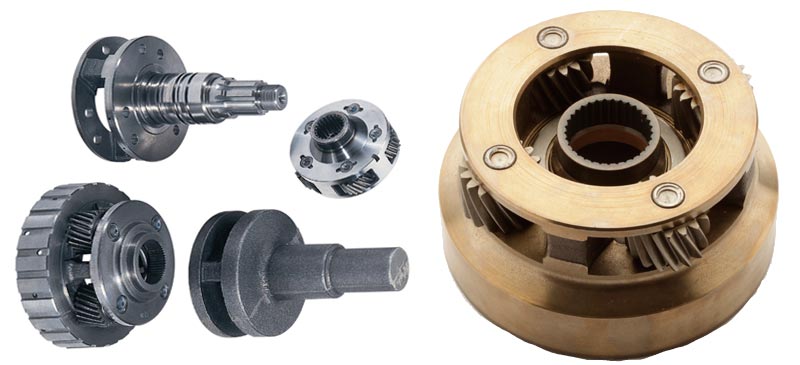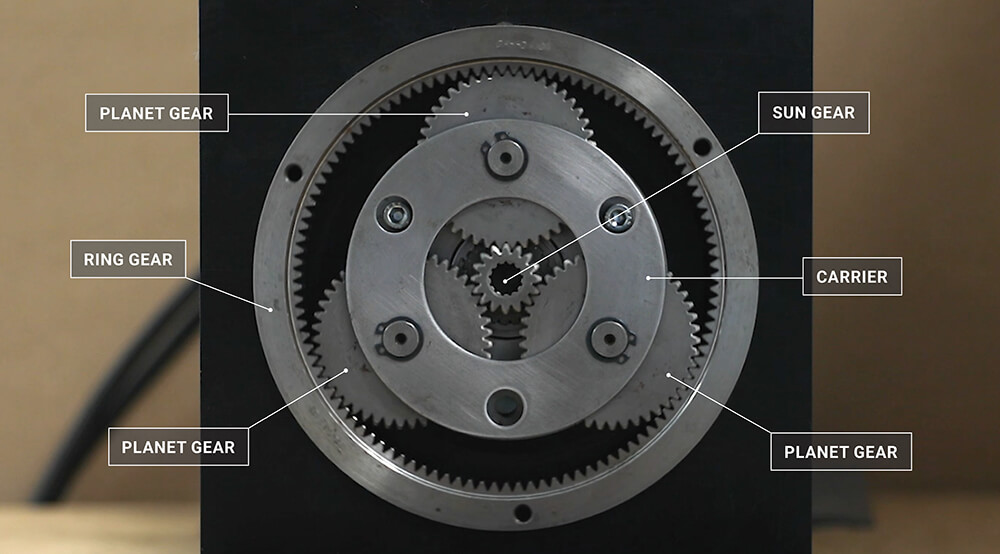Product Description
Product Description
Product Parameters
| Item | Spur Gear Axle Shaft |
| Material | 4140,4340,40Cr,42Crmo,42Crmo4,20Cr,20CrMnti, 20Crmo,35Crmo |
| OEM NO | Customize |
| Certification | ISO/TS16949 |
| Test Requirement | Magnetic Powder Test, Hardness Test, Dimension Test |
| Color | Paint , Natural Finish ,Machining All Around |
| Material | Aluminum: 5000series(5052…)/6000series(6061…)/7000series(7075…) |
| Steel: Carbon Steel,Middle Steel,Steel Alloy,etc. | |
| Stainess Steel: 303/304/316,etc. | |
| Copper/Brass/Bronze/Red Copper,etc. | |
| Plastic:ABS,PP,PC,Nylon,Delrin(POM),Bakelite,etc. | |
| Size | According to Customer’s drawing or samples |
| Process | CNC machining,Turning,Milling,Stamping,Grinding,Welding,Wire Injection,Cutting,etc. |
| Tolerance | ≥+/-0.03mm |
| Surface Treatment | (Sandblast)&(Hard)&(Color)Anodizing,(Chrome,Nickel,Zinc…)Plating,Painting,Powder Coating,Polishing,Blackened,Hardened,Lasering,Engraving,etc. |
| File Formats | ProE,SolidWorks,UG,CAD,PDF(IGS,X-T,STP,STL) |
| Sample | Available |
| Packing | Spline protect cover ,Wood box ,Waterproof membrane; Or per customers’ requirements. |
Our Advantages
Why Choose US ???
1. Equipment :
Our company boasts all necessary production equipment,
including Hydraulic press machines, Japanese CNC lathe (TAKISAWA), Korean gear hobbing machine (I SNT), gear shaping machine, machining center, CNC grinder, heat treatment line etc.
2. Processing precision:
We are a professional gear & gear shafts manufacturer. Our gears are around 6-7 grade in mass production.
3. Company:
We have 90 employees, including 10 technical staffs. Covering an area of 20000 square meters.
4. Certification :
Oue company has passed ISO 14001 and TS16949
5.Sample service :
We provide free sample for confirmation and customer bears the freight charges
6.OEM service :
Having our own factory and professional technicians,we welcome OEM orders as well.We can design and produce the specific product you need according to your detail information
Cooperation Partner
Company Profile
Our Featured Products
| Application: | Motor, Electric Cars, Motorcycle, Machinery, Marine, Agricultural Machinery, Car |
|---|---|
| Manufacturing Method: | Cast Gear |
| Toothed Portion Shape: | Spur Gear |
| Material: | Stainless Steel |
| Type: | Circular Gear |
| Yield: | 5, 000PCS / Month |
| Samples: |
US$ 0/Piece
1 Piece(Min.Order) | |
|---|
| Customization: |
Available
| Customized Request |
|---|

Can you explain how an epicyclic gear system handles torque distribution?
An epicyclic gear system, also known as a planetary gear system, is designed to handle torque distribution in an efficient and effective manner. Here’s a detailed explanation:
An epicyclic gear system consists of three main components: the sun gear, planet gears, and the ring gear. Each of these components plays a specific role in torque distribution:
1. Sun Gear:
The sun gear is the central gear in the system and receives torque input. It is typically connected to the power source, such as an engine or motor. The sun gear transfers torque to the other components of the system.
2. Planet Gears:
The planet gears are mounted on a carrier and rotate around the sun gear. They mesh with both the sun gear and the ring gear. The planet gears distribute torque between the sun gear and the ring gear, facilitating power transmission.
3. Ring Gear:
The ring gear is the outermost gear in the system and has internal teeth that engage with the planet gears. It is typically connected to the output shaft and transfers torque to the desired output, such as wheels in a vehicle or a generator in a wind turbine.
Here’s how the torque distribution works in an epicyclic gear system:
1. Torque Input:
The torque input is applied to the sun gear. As the sun gear rotates, it transfers torque to the planet gears.
2. Torque Distribution:
The planet gears receive torque from the sun gear and distribute it between the sun gear and the ring gear. Since the planet gears are meshed with both the sun gear and the ring gear, torque is transmitted from the sun gear to the ring gear through the planet gears.
3. Torque Multiplication or Reduction:
The torque distribution in an epicyclic gear system can be configured to provide either torque multiplication or torque reduction, depending on the arrangement of the gears. For example, if the sun gear is held stationary, the planet gears can rotate around the sun gear, causing the ring gear to rotate at a higher speed with increased torque. This configuration provides torque multiplication. Conversely, if the ring gear is held stationary, the sun gear can rotate, causing the planet gears to rotate in the opposite direction, resulting in torque reduction.
4. Even Torque Distribution:
An advantage of using an epicyclic gear system is that it facilitates even torque distribution among the planet gears. The multiple planet gears share the load, which helps distribute torque evenly across the gear system. This even torque distribution minimizes stress concentration on individual gear teeth, reducing wear and improving overall durability and reliability.
In summary, an epicyclic gear system handles torque distribution by transferring torque from the sun gear to the planet gears, which then distribute it between the sun gear and the ring gear. This configuration allows for torque multiplication or reduction and ensures even torque distribution among the planet gears, resulting in efficient power transmission and reliable operation.

What is the purpose of using epicyclic gears in robotics and automation?
Epicyclic gears, also known as planetary gears, serve several purposes in robotics and automation. Here’s a detailed explanation:
1. Compact Size:
Epicyclic gears offer a compact and space-efficient solution for transmitting torque and achieving different speed ratios. The arrangement of multiple gears within a single gear system allows for a high gear reduction or speed increase in a relatively small package. This compact size is particularly advantageous in robotics and automation applications where space is limited.
2. High Torque Transmission:
Epicyclic gears are capable of transmitting high torque levels due to their design. The load is distributed among multiple planet gears, allowing for a higher torque capacity compared to other gear types. This high torque transmission capability makes epicyclic gears suitable for applications that require precise and powerful motion control, such as robot joints and industrial automation systems.
3. Speed Control:
The arrangement of gears in an epicyclic gear system allows for precise control over speed ratios. By manipulating the input and output gears, different gear ratios can be achieved, enabling speed control and gear reduction or amplification. This speed control capability is essential in robotics and automation to achieve desired motion profiles and optimize system performance.
4. Backlash Minimization:
Epicyclic gears can be designed to minimize backlash, which is the angular clearance between gear teeth when there is no load applied. Backlash can introduce inaccuracies and delays in robotic and automation systems. By carefully designing gear tooth profiles and controlling gear meshing, epicyclic gears can reduce backlash, improving precision and responsiveness in motion control applications.
5. Efficiency and Durability:
Epicyclic gears can achieve high efficiency levels due to their rolling contact between gear teeth. This rolling contact results in less friction and energy loss compared to sliding contact gears. Additionally, the load distribution among multiple gear teeth reduces the stress on individual teeth, enhancing durability and prolonging the gear system’s lifespan.
6. Modular Design:
Epicyclic gears offer a modular design that allows for easy integration into robotic and automation systems. They can be combined with other mechanical components, such as motors and actuators, to create compact and efficient power transmission systems. The modular nature of epicyclic gears simplifies system design, assembly, and maintenance.
7. Reduction of Motor Torque Ripple:
In certain robotic applications, particularly those requiring smooth and precise motion, epicyclic gears can be utilized to reduce motor torque ripple. By incorporating epicyclic gears with appropriate gear ratios, the torque ripple generated by the motor can be smoothed out, resulting in smoother and more uniform motion.
In summary, the purpose of using epicyclic gears in robotics and automation is to provide a compact size, high torque transmission, speed control, backlash minimization, efficiency and durability, modular design, and reduction of motor torque ripple. These advantages make epicyclic gears a valuable choice for achieving precise motion control, optimizing system performance, and enhancing the overall efficiency and reliability of robotic and automation systems.

What is an epicyclic gear and how does it function?
An epicyclic gear, also known as a planetary gear, is a gear system that consists of one or more outer gears, an inner gear, and a central gear, known as a sun gear. Here’s a detailed explanation of how it functions:
1. Gear Arrangement:
In an epicyclic gear system, the sun gear is located at the center and is surrounded by multiple outer gears, also called planet gears. The planet gears are typically mounted on a carrier, which allows them to rotate around the central sun gear.
2. Gear Engagement:
The teeth of the planet gears mesh with both the sun gear and an outer ring gear, also known as the annular gear. The annular gear has internal teeth that engage with the planet gears and external teeth that provide the outer boundary of the gear system.
3. Input and Output:
The input and output connections can be achieved in different ways depending on the design. Typically, the sun gear serves as the input shaft, while the carrier or the annular gear acts as the output shaft. The rotation of the input shaft (sun gear) causes the planet gears to orbit around it and rotate, resulting in the output shaft’s motion.
4. Gear Ratios:
An essential feature of epicyclic gears is their ability to provide different gear ratios by changing the arrangement of the gears. By holding one component stationary, such as fixing the annular gear or the carrier, and driving another component, the gear system can achieve various speed and torque combinations.
5. Gear Functions:
Epicyclic gears have several useful functions in mechanical systems, including:
- Speed reduction: By fixing the sun gear and rotating the carrier or the annular gear, the output speed can be reduced compared to the input speed.
- Speed increase: By fixing the carrier or the annular gear and rotating the sun gear, the output speed can be increased compared to the input speed.
- Directional changes: Changing the gear engagement arrangement allows reversing the direction of rotation between the input and output shafts.
- Torque multiplication: By utilizing the gear ratios, an epicyclic gear system can multiply or divide the torque between the input and output shafts, providing mechanical advantage.
- Braking: By holding specific components, such as the sun gear or the carrier, the gear system can act as a brake, preventing rotation or controlling the speed of the output shaft.
Epicyclic gears find applications in various mechanical systems, including automotive transmissions, gearboxes, power tools, and robotics, due to their compact size, versatility, and ability to achieve multiple gear ratios within a single gear system.


editor by CX 2023-11-02